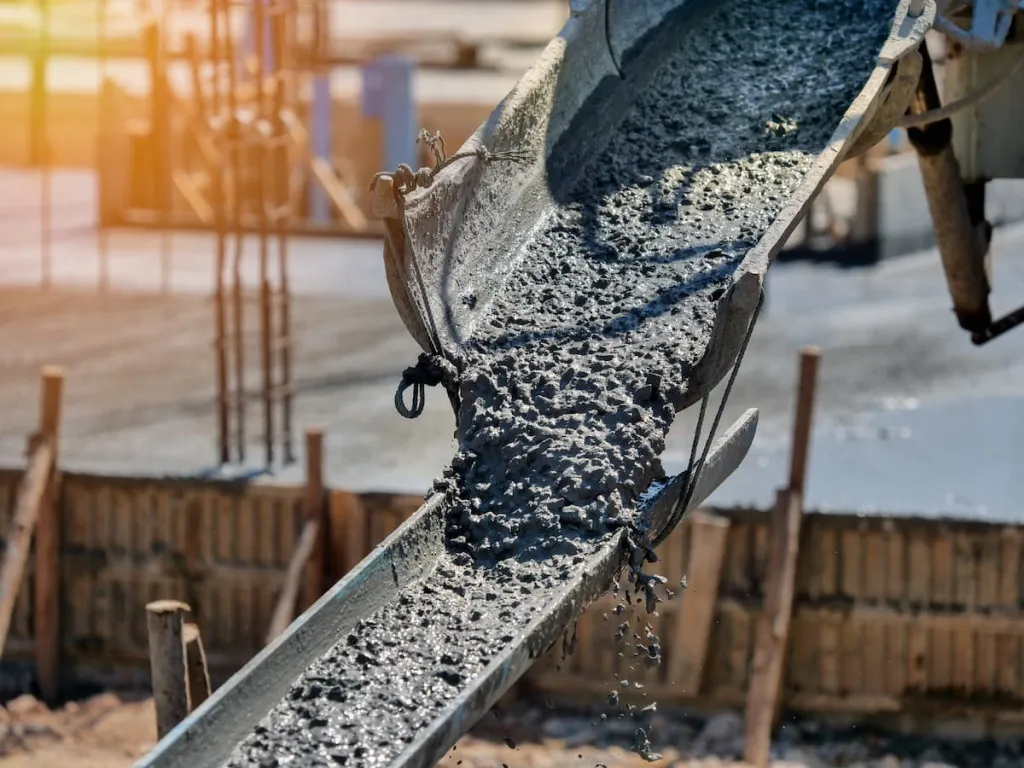Conventional concrete is a type of concrete that uses manual mixing in the manufacturing process. It is often used in construction projects, just like ready-mixed concrete or rebates.
However, conventional concrete is not the same as other types because it has its own advantages, disadvantages, and characteristics. To know more about conventional concrete, let's take a look at the explanation in this article!
Definition of Conventional Concrete
Conventional concrete is a variety of concrete that is mixed, poured, and dried at the construction site. This concrete is also known as cast concrete. Generally, the process of making conventional concrete must go through some planning.
Why is that? Most of the work in making concrete is done manually, especially in the stages of mixing ingredients, casting, and installing reinforcement in buildings.
The main ingredients needed to make conventional concrete are cement, coarse aggregate (gravel), fine aggregate (sand), and water. Sometimes, admixtures (chemical additives) are added in order to change the properties of the concrete.
The mixing of materials must be done in the precise ratio required for the project. Usually, the process is more time-consuming and requires both skill and careful supervision.
Advantages and Disadvantages of Conventional Concrete
The application of conventional concrete in construction projects has been done for a long time. Although the manufacture of concrete is now increasingly diverse, conventional concrete is still used in various construction projects.
However, always consider the advantages and disadvantages of conventional concrete before deciding to use it as a building material. Some of the advantages and disadvantages of conventional concrete are as follows:
1. Advantages of Conventional Concrete
In addition, there are several other advantages that can be considered. The advantages of conventional concrete are as follows:
- Easier supervision as well as control because it is made directly by workers at the construction site and is included in the overall construction process.
- Since it is made directly at the project site, the application of conventional concrete is easier to adjust to the construction needs.
- Workers can also form a concrete that is customized to the needs of the construction, so that it is more flexible in terms of design and composition.
- Conventional concrete mixing can be done in a small area, so it does not require a large area.
- The necessary materials are easy to obtain and can be customized according to the needs of the project.
- It is ideal for large structures, such as walls and foundations, as it can form political elements.
- Beam, slab, and column connections are monolithic (fully bonded).
2. Disadvantages of Conventional Concrete
Not only advantages, conventional concrete also has disadvantages that must be considered. The disadvantages of conventional concrete are as follows.
- Measuring the concrete grade and quality according to standards is more difficult because it is not directly supervised by workers who are experts and experienced in making conventional concrete.
- Requires a longer processing time because you have to start making concrete structures from the start.
- Requires more labor in the manufacturing process.
- The need for formwork increases.
- Leaves residual work waste at the construction site, such as sand, cement, and others that have the potential to pollute the surrounding environment.
- The processing process can be affected by the weather. The casting process will be disrupted if it rains.
Read also: Concrete Rebate: Definition, Functions, and Advantages
Difference between Precast Concrete and Conventional Concrete
Apart from conventional concrete, construction projects also use precast concrete. Both concrete are equally superior and suitable for various constructions. However, some differences between precast concrete and conventional concrete need to be understood, as follows:
1. Method of Manufacture
The difference between precast concrete and conventional concrete can be seen in the manufacturing method. Precast concrete is produced in a factory using specialized machinery, which results in a shorter manufacturing time.
This will certainly help save construction time in the field. The reason is that the concrete structure can be used immediately without waiting for drying or hardening.
This is certainly in contrast to the conventional method of making concrete, which is still done manually at the construction site. And needs to mix, pour, and dry it, is also longer.
2. Flexibility
In terms of flexibility, conventional concrete is more flexible than precast concrete. This is because the concrete is molded directly at the construction site so that its composition, size, shape, and dimensions can be adjusted directly to the needs of the project.
On the other hand, Precast concrete is produced in a factory using existing molds, so the size and shape are more limited. Although there are custom molds that can be made, it will require additional costs.
3. Quality
The next difference between precast concrete and conventional concrete is also in terms of quality. Precast concrete is considered to have better and consistent quality because the production process is carried out according to strict standards and controls in the factory environment.
Meanwhile, the quality of conventional concrete is difficult to measure and depends on the experience of the workers and the conditions in the field, allowing structural problems to occur in the future.
Read also: Concrete Curing: Definition, Function, and How to Do It
4. Labor
The process of making precast concrete tends to involve less labor, even though it is produced in a factory. On the contrary, since it has to be done from the start, there is more labor involved in the manufacture of conventional concrete.
5. Environmental Impact
In terms of environmental impact, precast concrete can reduce waste. This is because the process is done in a factory, making it more efficient and minimizing the overall humidity of the environment.
Meanwhile, conventional concrete more often produces waste due to the mixing process and the disposal of unused materials.
6. Cost
Next, the difference between precast concrete and conventional concrete is the initial cost of production. Precast concrete requires a slightly higher initial cost. However, due to the savings in labor and time, the cost seems more balanced.
As a result, the long-term benefits are more significant, especially in large projects. On the other hand, conventional concrete offers a lower price upfront. However, it often faces additional costs due to delays and repair needs.
That's all the explanation of the definition of conventional concrete, including its advantages, disadvantages, and differences with precast concrete. By understanding the information above, you can be more selective in choosing the type of concrete to be used.
However, if your construction project plans to use precast concrete as one of its materials, then Precast Concrete products from Semen Merah Putih should be considered as the right option.
Semen Merah Putih produces a variety of precast concrete, ranging from Sheet Pile Slabs, U-Ditch, Box Culvert, Piles, Girder, and other custom products. So, you can choose products according to your needs and preferences.
Through one of its subsidiaries, Merah Putih Beton, Semen Merah Putih supplies innovative ready-mixed concrete products designed for a variety of unique and robust applications through its flagship products, such as Ready-Mixed Concrete, Aggregates, and Precast Concrete.
Ready-mix concrete production from Merah Putih Beton is made for a variety of applications according to consumer requests, available in various quality options, and can be used for the construction of various constructions, such as commercial, industrial, and infrastructure, which includes the construction of high-rise buildings, roads, residential, and others.
Interested in using concrete products from Semen Merah Putih? Contact us for further discussion to get the best solution for your construction needs!
Read also: 3 Advantages of Using Precast Concrete



